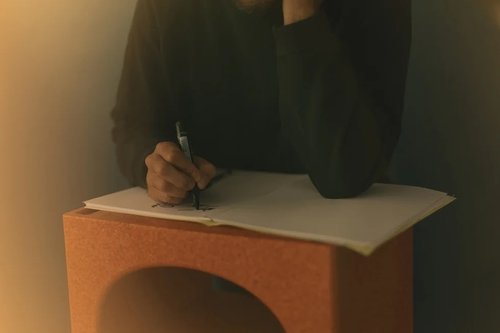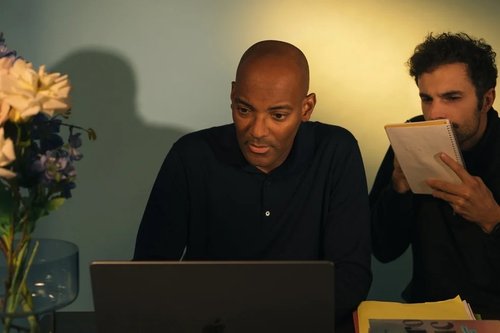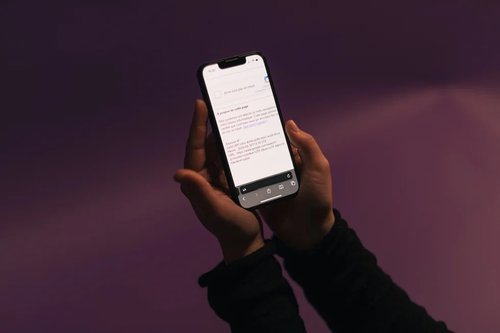The flow state: how to achieve peak concentration
Jun 29, 2021
5 mins


Journaliste indépendante.
What does a great chess player, a weekend jogger, a manager immersed in writing a quarterly report and a busy barista have in common? They are all likely in a “flow” state—where mind and body meet seamlessly in the present moment, fully absorbed by what they are doing. It’s a feeling of intense concentration when time stands still. Exiting this state is like coming up to the surface and reconnecting with the outside world, leaving those who experience it feeling sad and content.
How and why does flow state occur? What’s going on in the brain? Can it be activated? Here are a few leads that we came up with.
In search of flow
Hungarian-American psychologist Mihály Csíkszentmihályi is commonly known as the founder of flow theory. His interest in the subject began in the 1960s while he was researching the creative process. He observed artists at work and was intrigued by their extreme concentration, ability to persevere beyond discomfort, fatigue, or hunger, and the state of well-being they felt upon finishing their tasks. Since many of them described their experience as a “flowing” sensation, Csíkszentmihályi named it “flow”. For many years, he has been working to understand how it can be created and controlled.
Today, coaches and productivity experts use his theory as a way to increase efficiency and boost concentration. And it really works! However, improved habits are merely the “side effects” of flow. The aim of Csíkszentmihályi’s research on flow is to help people to be happier and more fulfilled. “Contrary to what we usually believe. . . the best moments in our lives are not the passive, receptive, relaxing times—although such experiences can also be enjoyable if we have worked hard to attain them. The best moments usually occur when a person’s body or mind is stretched to its limits in a voluntary effort to accomplish something difficult and worthwhile,” he writes in his book Flow: The Psychology of Optimal Experience.
So, whether you’re writing lines of code, hitting the gym, or painting a picture, certain types of activities are more likely to activate flow. What do they all have in common? They involve carrying out a specific task with a clear objective and direct feedback. Video games, for example, are designed to induce flow. Designers gradually increase the level of difficulty to keep players hovering between intense concentration and satisfaction until they lose all sense of time. As action and consciousness become one, flow gives you a feeling of total control and alters your perception of time.
The neuroscience of flow
“It’s the exact opposite of a conscious state. You get so lost in the work that you don’t realize you’re entering a deeper state,” Thomas Chatterton Williams—an American cultural critic and author—told us in our documentary. “I had the impression that my body was working by itself. I was flying from table to table without forgetting anything and without noticing the time,” said Sarah, who waited tables as a student. “I don’t even have to proofread my work. I know my brain has found the right words,” said Florent, an author, and teacher.
But what actually happens inside the brain during a flow state? As flow causes changes in neurological activity, brain waves slow down. This boosts concentration and the free flow of information, resulting in a feeling of “effortless execution”. Reduced activity in the prefrontal cortex—critical for decision-making and self-awareness—allows other regions in the brain to make new creative connections. At the same time, a cocktail of feel-good hormones is released into the system. With an extra shot of dopamine, serotonin, and endorphins, concentration and overall well-being are boosted.
How can I enter the flow state?
Besides having a positive impact on personal well-being, flow can help your career too. With an enhanced ability to focus on tasks, you’ll be more productive and a lot sharper; it can also help you to generate new ideas and think outside the box. For our documentary, we spoke to Samah Karaki, a neuroscientist and co-founder of the Social Brain Institute. “The flow state allows us to take risks and let go of conventional thinking, the status quo, and comfort. In these states, we have greater access to our creative potential,” she said.
So, what’s the best way to enter a flow state? Although there’s no magic formula, meeting a few simple conditions can make it easier to achieve.
Find a balance between your skill level and the level of difficulty. Tasks must be challenging enough to keep your mind engaged. However, the results need to be something within reach so your brain won’t get frustrated or be put under needless stress. And even really boring tasks can induce flow if you add a challenge into the mix. For example, if you’re applying for jobs, force yourself to come up with a great opening line for each cover letter. Or if you’re stuck sorting through a bunch of old files, put on a timer and see if you can do it in under three minutes.
Familiarize your brain with the task. Flow requires your brain to let go, something that it can only achieve with familiar tasks. Like a martial artist who repeats the same movement hundreds of times until it becomes an unconscious reflex, your brain needs training before a new task is automatic.
Set your brain clear objectives. To help your brain to really focus on the task at hand, it needs a specific result to aim for.
Get direct and immediate feedback. While clear objectives point your brain in the right direction, continual feedback will keep it on the right track. Knowing how to improve your performance keeps you firmly grounded in the present moment.
Eliminate jarring distractions. Entering the flow state is a gradual process. Get rid of external distractions such as notifications or noise and internal distractions such as stress or hunger. That way, you’ll keep the process from being interrupted.
Listen to music. But choose your flow soundtrack wisely. Music has the power to shift emotional states—it can make you feel happy or sad, and it can also help you to achieve flow. To create a “flow state” playlist, choose repetitive music without lyrics from the electronic, classical, or jazz genre, for example. Avoid earworms.
Tune into your body clock. Every individual has a different rhythm, with specific times of day or night best suited to peak concentration. Identify when your brain is at its sharpest so you can make the most of this precious time.
Find intrinsic motivation for the task. Extrinsic, or external, motivation can be compared to the “carrot and stick” approach, where you are expecting an external reward. Intrinsic, or internal, motivation is triggered when you find something pleasant or interesting.
Finding intrinsic motivation will help you to enter a flow state and make daily life and tasks more pleasant. Not only will it enhance your performance, but your overall well-being will get a major boost too. Finally, flow is often tricky and can be hard to achieve voluntarily,, especially for beginners. It takes practice and a good deal of self-awareness. “It’s like an orgasm,” said Johanna, a web editor. “Until you experience it, you don’t really know what it is. But once you’ve experienced it, you KNOW it was there and you want to experience it again.” So, are you ready to reach new heights? (And it’s Covid-friendly too!)
Translated by Andrea Schwam
Photo: Welcome to the Jungle
Follow Welcome to the Jungle on Facebook, LinkedIn, and Instagram, and subscribe to our newsletter to get our latest articles every day!

More inspiration: Productivity & tools

Goal setting: How to bounce back when you feel like a failure
The big F word ... Failure. We all face it, but here’s how to make it your secret weapon for success.
Dec 18, 2024

Productivity boost: Why mental health outshines long hours
Long hours don’t equal better work. Discover how mental health support can unlock productivity and time efficiency in the workplace.
Nov 28, 2024

10 fun ways people are using AI at work
While many use AI for basic tasks like grammar checks or voice assistants, others are finding innovative ways to spice up their work days.
Nov 05, 2024

12 Slack habits that drive us crazy
Slack is a top messaging platform, but coworkers can misuse it. Over-tagging and endless messages can make it frustrating ...
Oct 16, 2024

10 CareerTok creators you should be following
Looking for career advice? CareerTok has quick tips from real experts on interviews and job offers.
Sep 25, 2024
The newsletter that does the job
Want to keep up with the latest articles? Twice a week you can receive stories, jobs, and tips in your inbox.

Looking for your next job?
Over 200,000 people have found a job with Welcome to the Jungle.
Explore jobs